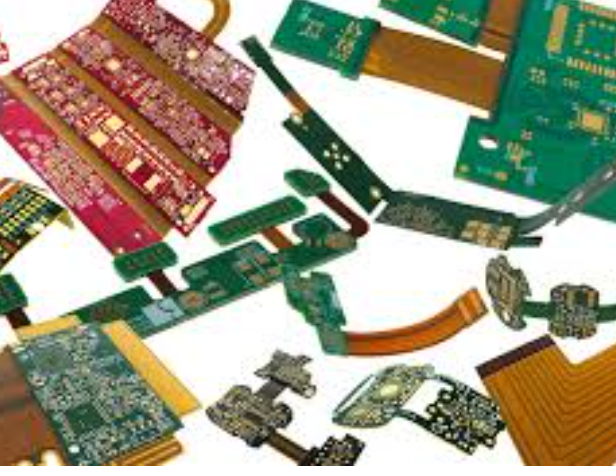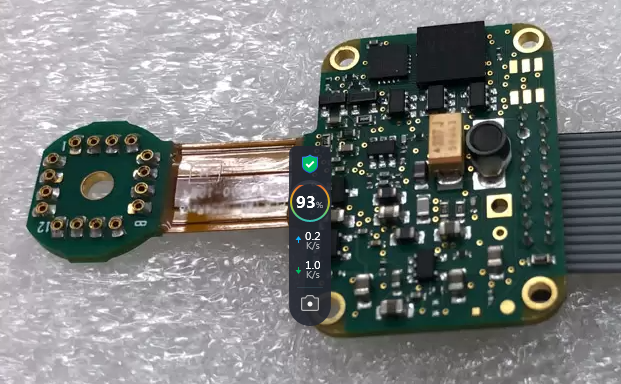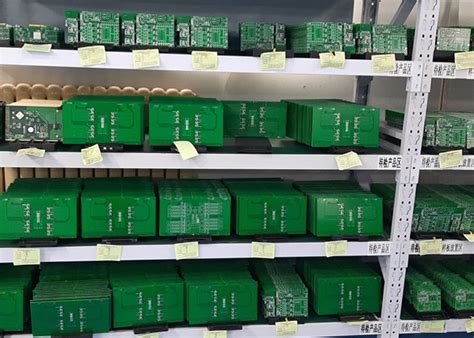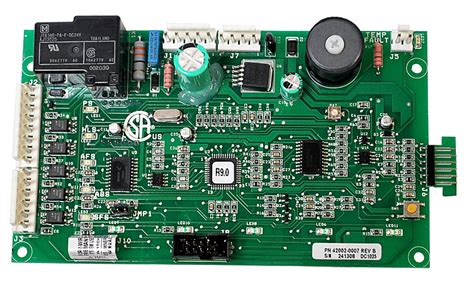Rigid-flex pcb fabrication
Advantages Of Rigid-Flex PCB Fabrication
Rigid-flex PCB fabrication offers a multitude of advantages that make it an increasingly popular choice in various industries.
One of the primary benefits is the enhanced design flexibility it provides.
By combining the best attributes of rigid and flexible circuits, rigid-flex PCBs allow for more complex and compact designs. This amalgamation enables engineers to create intricate electronic assemblies that would be challenging or impossible to achieve with traditional rigid or flexible PCBs alone. Consequently, this flexibility in design translates to more efficient use of space, which is particularly advantageous in applications where size and weight are critical factors, such as in aerospace and medical devices.
Another significant advantage of rigid-flex PCB fabrication is its improved reliability and durability.
The integration of rigid and flexible layers reduces the number of interconnects and solder joints, which are common points of failure in electronic assemblies. Fewer interconnects mean fewer potential failure points, leading to enhanced overall reliability. Additionally, the flexible layers can absorb and distribute mechanical stress more effectively than rigid boards, reducing the likelihood of damage due to vibrations or bending. This makes rigid-flex PCBs particularly suitable for applications subjected to harsh environmental conditions or mechanical stress, such as automotive and industrial equipment.
Moreover, rigid-flex PCBs contribute to cost savings in both the short and long term. Initially, the fabrication process may seem more expensive due to the complexity involved.
However, the reduction in the number of components and interconnects can lead to significant cost savings in assembly and testing. The streamlined design also simplifies the manufacturing process, reducing the time and labor required for assembly. In the long run, the enhanced reliability and durability of rigid-flex PCBs can result in lower maintenance and replacement costs, further contributing to overall cost efficiency.
In addition to cost savings, rigid-flex PCB fabrication offers improved electrical performance.
The seamless integration of rigid and flexible layers allows for shorter and more direct signal paths, reducing signal loss and improving overall electrical performance. This is particularly beneficial in high-frequency applications where signal integrity is paramount. The ability to design more efficient and reliable circuits can lead to better performance and functionality of the final product, giving manufacturers a competitive edge in the market.
Furthermore, rigid-flex PCBs facilitate easier and more efficient assembly processes.
The flexible sections can be bent and folded to fit into compact spaces, allowing for more straightforward and efficient assembly. This can be particularly advantageous in applications where space constraints are a significant concern, such as in consumer electronics and wearable devices. The ability to design and assemble more compact and efficient electronic assemblies can lead to more innovative and user-friendly products.
Lastly, the versatility of rigid-flex PCB fabrication makes it suitable for a wide range of applications.
From consumer electronics to aerospace, medical devices to automotive, the unique combination of rigidity and flexibility allows for innovative solutions across various industries. This versatility not only broadens the scope of potential applications but also encourages innovation and creativity in electronic design.
In conclusion, the advantages of rigid-flex PCB fabrication are manifold, encompassing enhanced design flexibility, improved reliability and durability, cost savings, better electrical performance, easier assembly processes, and broad application versatility. These benefits make rigid-flex PCBs an attractive option for manufacturers seeking to create more efficient, reliable, and innovative electronic products.

Key Design Considerations For Rigid-Flex PCBs
Rigid-flex PCB fabrication is a sophisticated process that combines the benefits of both rigid and flexible circuit boards, offering enhanced design versatility and improved performance in various applications. When designing rigid-flex PCBs, several key considerations must be taken into account to ensure optimal functionality and reliability. These considerations span from material selection to layout design, each playing a crucial role in the overall success of the final product.
To begin with, material selection is paramount in rigid-flex PCB design.
The choice of materials directly impacts the board’s flexibility, durability, and thermal performance. Typically, polyimide is used for the flexible layers due to its excellent thermal stability and mechanical properties. For the rigid sections, FR4 is commonly employed because of its robustness and cost-effectiveness. However, the combination of these materials must be carefully managed to prevent issues such as delamination or cracking during the manufacturing process. Therefore, understanding the thermal expansion coefficients and mechanical properties of the chosen materials is essential.
Transitioning to the layout design, it is crucial to consider the bend radius of the flexible sections.
The bend radius determines how tightly the flexible part of the PCB can be bent without causing damage. A general rule of thumb is to maintain a bend radius of at least ten times the thickness of the flexible material. This precaution helps to avoid stress fractures and ensures the longevity of the PCB. Additionally, designers should avoid placing vias, pads, or other components in areas that will experience significant bending, as these elements can be prone to mechanical stress and potential failure.
Another important aspect is the stack-up configuration of the rigid-flex PCB.
The stack-up defines the arrangement of conductive and insulating layers within the board. A well-planned stack-up can enhance signal integrity, reduce electromagnetic interference (EMI), and improve overall performance. It is advisable to use symmetrical stack-ups to minimize warping and ensure even distribution of mechanical stress. Moreover, incorporating ground planes and shielding layers can further mitigate EMI issues, which is particularly important in high-frequency applications.
Signal integrity is another critical consideration in rigid-flex PCB design.
High-speed signals can be susceptible to crosstalk, signal loss, and reflections, which can degrade the performance of the PCB. To address these challenges, designers should carefully route high-speed traces, maintaining consistent impedance and minimizing the length of signal paths. Utilizing differential pairs and controlled impedance traces can also help to preserve signal integrity. Additionally, proper termination techniques and the use of decoupling capacitors can further enhance signal quality.
Thermal management is equally important in rigid-flex PCB fabrication.
The combination of rigid and flexible sections can create hotspots, leading to potential thermal issues. Effective thermal management strategies, such as the use of thermal vias, heat sinks, and proper ventilation, can help dissipate heat and maintain the board’s performance. It is also essential to consider the thermal properties of the materials used and ensure that they can withstand the operating temperatures of the final application.
In conclusion, the design of rigid-flex PCBs requires careful consideration of various factors, including material selection, bend radius, stack-up configuration, signal integrity, and thermal management. By addressing these key considerations, designers can create robust and reliable rigid-flex PCBs that meet the demands of modern electronic applications. The integration of rigid and flexible sections offers unparalleled design flexibility, making rigid-flex PCBs an increasingly popular choice in industries ranging from consumer electronics to aerospace and medical devices.

Common Applications Of Rigid-Flex PCBs
Rigid-flex printed circuit boards (PCBs) have become increasingly prevalent in various industries due to their unique combination of the benefits of both rigid and flexible PCBs. These hybrid circuits offer enhanced reliability, reduced space requirements, and improved performance, making them suitable for a wide range of applications.
One of the most common applications of rigid-flex PCBs is in the aerospace industry.
The demanding conditions of aerospace environments, including extreme temperatures, vibrations, and mechanical stresses, necessitate the use of robust and reliable electronic components. Rigid-flex PCBs meet these requirements by providing a durable and flexible solution that can withstand the harsh conditions encountered in aerospace applications. They are often used in avionics systems, satellite communications, and other critical aerospace components.
In the medical field, rigid-flex PCBs are frequently employed in the design and manufacture of advanced medical devices.
These devices often require compact, lightweight, and highly reliable electronic circuits to ensure accurate and consistent performance. Rigid-flex PCBs are ideal for medical applications such as pacemakers, hearing aids, and diagnostic imaging equipment, where space constraints and reliability are of utmost importance. The ability to bend and flex without compromising performance allows for the creation of smaller, more ergonomic medical devices that can be comfortably worn or used by patients.
Consumer electronics is another sector where rigid-flex PCBs have found widespread use.
The ever-increasing demand for smaller, more powerful, and feature-rich electronic devices has driven the adoption of rigid-flex PCBs in products such as smartphones, tablets, and wearable technology. These PCBs enable the integration of multiple functions into a single, compact unit, reducing the overall size and weight of the device while maintaining high performance and reliability. The flexibility of these PCBs also allows for innovative product designs, such as foldable smartphones and flexible displays, which are becoming increasingly popular in the consumer electronics market.
The automotive industry has also embraced rigid-flex PCBs for various applications, particularly in the development of advanced driver assistance systems (ADAS), infotainment systems, and electric vehicles (EVs).
The complex electronic systems in modern vehicles require reliable and space-efficient solutions, making rigid-flex PCBs an ideal choice. They are used in applications such as engine control units, battery management systems, and in-vehicle communication networks, where their ability to withstand harsh environmental conditions and mechanical stresses is crucial for ensuring the safety and performance of the vehicle.
In the realm of industrial automation, rigid-flex PCBs are utilized in the design of sophisticated control systems and robotics.
These applications often involve complex circuitry and require high levels of reliability and durability. Rigid-flex PCBs provide the necessary flexibility and robustness to support the intricate electronic systems used in industrial automation, enabling the development of more efficient and reliable machinery and equipment.
In summary, rigid-flex PCBs have become an essential component in a wide range of industries due to their unique combination of flexibility, durability, and reliability. Their ability to withstand harsh conditions, reduce space requirements, and improve performance makes them ideal for applications in aerospace, medical devices, consumer electronics, automotive systems, and industrial automation. As technology continues to advance, the demand for rigid-flex PCBs is expected to grow, driving further innovation and development in these and other industries.

Challenges And Solutions In Rigid-Flex PCB Manufacturing
Rigid-flex PCB fabrication presents a unique set of challenges that require innovative solutions to ensure the production of reliable and high-performance circuit boards.
One of the primary challenges in rigid-flex PCB manufacturing is the complexity of the design process.
Unlike traditional rigid PCBs, rigid-flex boards combine both rigid and flexible substrates, necessitating meticulous planning and design to accommodate the different material properties and mechanical stresses. This complexity is further compounded by the need to ensure signal integrity and minimize electromagnetic interference, which can be particularly challenging given the varying dielectric constants and thermal expansion coefficients of the materials involved.
To address these design challenges, advanced computer-aided design (CAD) tools are employed.
These tools allow engineers to simulate the mechanical and electrical behavior of the rigid-flex PCB, enabling them to identify potential issues before the fabrication process begins. Additionally, design for manufacturability (DFM) principles are applied to ensure that the design can be efficiently and reliably produced. This includes considerations such as the placement of vias, the routing of traces, and the selection of appropriate materials.
Another significant challenge in rigid-flex PCB fabrication is the selection and handling of materials.
The flexible sections of the PCB are typically made from polyimide, a material known for its excellent thermal stability and flexibility. However, polyimide is also more susceptible to moisture absorption and can be more difficult to process compared to traditional FR-4 materials used in rigid sections. To mitigate these issues, manufacturers must carefully control the environmental conditions during fabrication and employ specialized equipment and techniques for material handling and processing.
The lamination process in rigid-flex PCB manufacturing also presents unique challenges.
The process involves bonding multiple layers of rigid and flexible materials together, which requires precise control of temperature, pressure, and time to ensure a reliable bond without introducing defects such as delamination or warping. Advanced lamination techniques, such as sequential lamination and the use of low-flow prepregs, are often employed to achieve the desired results. Additionally, thorough inspection and testing are conducted at various stages of the lamination process to detect and address any issues early on.
Furthermore, the drilling and plating processes in rigid-flex PCB fabrication require specialized equipment and techniques.
The flexible sections of the PCB can be easily damaged during drilling, necessitating the use of controlled-depth drilling and laser drilling techniques to create precise and clean holes without compromising the integrity of the flexible material. Similarly, the plating process must be carefully controlled to ensure uniform coverage and adhesion of the conductive material, particularly in the transition areas between rigid and flexible sections.
Quality control is another critical aspect of rigid-flex PCB manufacturing.
Given the complexity and precision required, rigorous testing and inspection protocols are essential to ensure the final product meets the required specifications and performance standards. This includes electrical testing, mechanical testing, and environmental testing to verify the board’s reliability under various conditions. Advanced inspection techniques, such as automated optical inspection (AOI) and X-ray inspection, are often employed to detect defects that may not be visible to the naked eye.
In conclusion, rigid-flex PCB fabrication involves a series of complex and interrelated challenges that require a combination of advanced design tools, specialized materials, precise manufacturing techniques, and rigorous quality control measures. By addressing these challenges through innovative solutions and meticulous attention to detail, manufacturers can produce high-quality rigid-flex PCBs that meet the demanding requirements of modern electronic applications.







